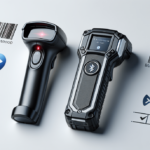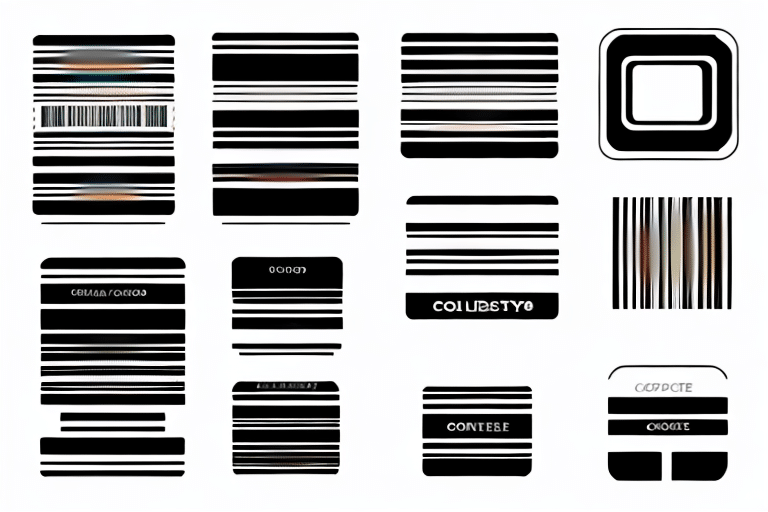If you're running an online business selling art and collectibles, you know how important it is to keep your inventory organized. One of the best tools to help with this is a barcode scanner. Barcode scanners make it easy for you to track your merchandise, manage your inventory, and streamline your shipping and fulfillment process. In this article, we'll take a look at the top 10 barcode scanners for art and collectibles e-commerce, as well as the benefits of using these tools and how to choose the right one for your business.
The Importance of Barcode Scanners in Art and Collectibles E-Commerce
Barcode scanners have become a must-have tool for online businesses that sell art and collectibles. Not only do they make it easy for you to keep track of your inventory, but they can also help you with product identification, pricing, and tracking shipments. Using a barcode scanner can save you time and reduce errors in data entry. Plus, it gives your business a more professional, organized look.
Another benefit of using barcode scanners in art and collectibles e-commerce is that they can help prevent fraud. By scanning the barcode on an item, you can ensure that the product being sold matches the description and images on your website. This can help protect your business from fraudulent claims and chargebacks.
Additionally, barcode scanners can provide valuable data insights for your business. By tracking which products are selling the most, you can make informed decisions about which items to restock and which ones to discontinue. This can help you optimize your inventory and increase your profits.
How to Choose the Best Barcode Scanner for Your Art and Collectibles Business
When it comes to selecting a barcode scanner, there are a number of factors to consider. First, think about the type of scanner you need, whether it's handheld, desktop, wireless, or Bluetooth-enabled. You should also consider the scanner's accuracy, scanning distance, and durability. Other important factors include battery life, compatibility with your software, and ease of use.
Another important factor to consider when choosing a barcode scanner is the type of barcodes it can read. Some scanners are only able to read certain types of barcodes, such as 1D or 2D codes. If your business requires scanning of specific types of barcodes, make sure the scanner you choose is compatible with those codes.
Additionally, it's important to consider the size and weight of the scanner. If you need to scan items frequently or for long periods of time, a heavy or bulky scanner may become uncomfortable to use. Look for a scanner that is lightweight and easy to hold for extended periods of time.
The Benefits of Using Barcode Scanners for Inventory Management in Art and Collectibles E-Commerce
Barcode scanners can be incredibly beneficial for inventory management in art and collectibles e-commerce. They can help you track the number of items you have in stock, monitor your sales, and even help prevent theft. Using a barcode scanner can also make it easier to keep track of items that are on backorder or out of stock, as well as help you identify which products are selling best.
Another benefit of using barcode scanners for inventory management in art and collectibles e-commerce is that they can help you save time and reduce errors. Manually entering inventory data can be time-consuming and prone to errors, but with a barcode scanner, you can quickly and accurately scan items and update your inventory records in real-time.
Additionally, barcode scanners can help you streamline your order fulfillment process. By scanning barcodes on products and orders, you can ensure that the correct items are being shipped to customers, reducing the likelihood of shipping errors and returns. This can help improve customer satisfaction and reduce costs associated with returns and exchanges.
The Top Features to Look for in a Barcode Scanner for Your Art and Collectibles Business
When it comes to selecting a barcode scanner for your art and collectibles business, there are a few key features that you want to look for. First, make sure that the scanner is easy to use and has a simple interface. You should also look for scanners that have good scanning speed and accuracy, as well as long battery life. Additionally, consider the connectivity options for the scanner, such as Wi-Fi or Bluetooth, and make sure that it's compatible with your existing software.
Another important feature to consider when selecting a barcode scanner for your art and collectibles business is the durability of the device. Since you'll be using the scanner frequently, it's important to choose a model that can withstand regular wear and tear. Look for scanners that are made with high-quality materials and have a sturdy design.
Finally, consider the size and weight of the scanner. If you'll be using the device for extended periods of time, you'll want to choose a model that is comfortable to hold and won't cause hand fatigue. Additionally, if you plan to use the scanner for mobile inventory management, you'll want to choose a lightweight model that is easy to carry with you on the go.
How to Use Barcode Scanners to Streamline Your Art and Collectibles Fulfillment Process
If you're looking to streamline your art and collectibles fulfillment process, using a barcode scanner can help you do just that. By scanning items as they're picked and packed, you can easily keep track of what's been shipped and what still needs to be shipped. This can save you a lot of time and effort, as well as reduce the risk of shipping errors.
Another benefit of using barcode scanners in your art and collectibles fulfillment process is that it can help you with inventory management. By scanning items as they come in and out of your warehouse, you can keep track of your stock levels and know when it's time to reorder. This can help you avoid stockouts and ensure that you always have the items your customers want in stock.
Additionally, using barcode scanners can help you improve your order accuracy. By scanning items instead of manually entering them into your system, you can reduce the risk of human error. This can help you avoid costly mistakes, such as shipping the wrong item to a customer or sending an item to the wrong address. By improving your order accuracy, you can increase customer satisfaction and build a reputation for reliability.
The Pros and Cons of Wired vs Wireless Barcode Scanners for Art and Collectibles E-Commerce
When selecting a barcode scanner for your art and collectibles e-commerce business, you'll need to choose between a wired or wireless model. Wired scanners are generally less expensive and more reliable than wireless models, but they can be less convenient to use. Wireless scanners, on the other hand, offer more flexibility and portability, but may be more expensive and less reliable than their wired counterparts.
It's important to consider the environment in which you'll be using the barcode scanner. If you have a small workspace or limited mobility, a wired scanner may be the better option as it won't require a battery or charging. However, if you need to move around a lot or scan items in different locations, a wireless scanner may be more practical. Additionally, if you have a large inventory or frequently need to scan items from a distance, a wireless scanner with a longer range may be necessary.
Case Studies: How Top Art and Collectibles E-Commerce Businesses are Using Barcode Scanners to Succeed
Many top art and collectibles e-commerce businesses are using barcode scanners to help them succeed. One example is Artnet, which uses scanners to track their inventory and artwork pricing. Another, Artsy, uses scanners to help with their order tracking and fulfillment process. By using barcode scanners effectively, businesses like these are able to streamline their processes and become more efficient.
Additionally, barcode scanners can also help these businesses with authentication and provenance tracking. For example, some art and collectibles e-commerce businesses use scanners to verify the authenticity of items before they are listed for sale. This helps to build trust with customers and ensures that the items being sold are genuine. Barcode scanners can also be used to track the provenance of items, providing a detailed history of ownership and authenticity. This information can be valuable to both buyers and sellers in the art and collectibles market.
Tips for Maintaining Your Barcode Scanner and Keeping it in Top Condition
To get the most out of your barcode scanner, it's important to keep it in good condition. This includes cleaning it regularly, storing it properly, and ensuring that it's charged or powered off when not in use. You should also try to avoid dropping or exposing the scanner to extreme temperatures or moisture. By taking good care of your barcode scanner, you can ensure that it performs reliably and accurately for years to come.
One important aspect of maintaining your barcode scanner is to regularly update its firmware. Manufacturers often release updates that can improve the scanner's performance or fix any bugs or issues. You can usually find firmware updates on the manufacturer's website or by contacting their customer support.
Another tip is to use the scanner correctly and avoid putting unnecessary strain on it. This means not using it to scan items that are too far away or too small, and not pressing too hard on the scanner when scanning. Additionally, if your scanner has a trigger button, try not to press it too hard or too frequently, as this can cause wear and tear on the button and affect its functionality over time.
Future Trends: What's Next for Barcode Scanning Technology in the Art and Collectibles Industry?
In the future, we can expect to see barcode scanning technology continue to evolve and become even more advanced. This may include the use of augmented reality and virtual reality, as well as the integration of mobile and cloud-based technologies. Additionally, we may see an increased emphasis on data analytics and the use of automation to streamline inventory management and fulfillment processes.
In conclusion, using a barcode scanner can be an incredibly powerful tool for art and collectibles e-commerce businesses. By carefully considering your options and selecting the right scanner for your needs, you can streamline your processes, improve your inventory management, and take your business to the next level.
One potential future trend for barcode scanning technology in the art and collectibles industry is the use of blockchain technology. By incorporating blockchain into the scanning process, businesses can ensure the authenticity and provenance of their items, which is especially important in the art world. This technology can also help to prevent fraud and protect against counterfeit items.
Another potential trend is the use of artificial intelligence (AI) to enhance the scanning process. AI can help to identify and categorize items more accurately and efficiently, as well as provide insights into consumer behavior and preferences. This can help businesses to better understand their customers and make more informed decisions about their inventory and marketing strategies.








